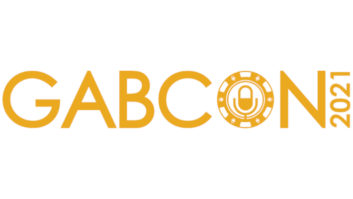
Lady’s Mile, Cyprus, is home to the BBC Arabic transmissions.
Courtesy of BBCWS
LONDON — On March 27, 2011, an era ended in British broadcasting when the BBC World Service shut down its 648 kHz medium-wave 500 kW service to Europe and its other medium-wave services to Russia. With the end of its MW broadcasts from the Orfordness transmitting station on England’s east coast, BBCWS ceased to be available to European listeners over the air. Now these listeners have to listen to the BBCWS on DAB, online and via satellite television.
“Since then, the World Service has shut down its 1323 kHz MW service to the Eastern Mediterranean from Cyprus,” said Nigel Fry, the BBCWS’ head of distribution. “Listeners to BBCWS English in Israel, much of Lebanon, Cyprus, and Turkey now have to get us via satellite and the Internet, though our Arabic MW services continue.”
The BBCWS is not alone in its actions. “During the last 10 years many state broadcasters in Europe have closed their medium-wave transmitters down,” said Ydun Rtiz, webmaster of the listener-written MW site www.mediumwave.info. “So have Norway, Sweden, Finland, Netherlands and Denmark. What is left is some private-owned radio stations.” Ireland’s RTÉ closed its last MW transmitter in 2012. The closure of European MW stations gained momentum in 2015, when a number of broadcasters silenced their services. “The most famous was Luxembourg on 1440 kHz, a radio powerhouse for decades in Europe, which silenced at midnight Dec. 31, 2015,” Triz said. “Germany closed down the frequencies 549, 756, 1269, 1422 kHz at the same time. All France Info and France Bleu MW stations were silenced too.”

A DRM transmitter installed at the Österreichische
Rundfunksender, Austrian Broadcasting Service transmitter site
in Moosbrun, Austria. Courtesy of Wiki Commons
GOING DARK
There are a number of reasons why European MW stations are going dark — and the most important reason is money. Despite the superior geographic coverage offered by MW signals compared to line-of-sight FM and DAB — especially at night, when MW signals can travel over the horizon by skipping off the ionosphere — the sheer cost of powering megawatt MW transmitters has driven many cash-strapped broadcasters to focus on lower-power, lower-cost FM/DAB transmission instead. (Given that no transmitters are required, online radio is even cheaper for broadcasters.)
Certainly money was the reason that the BBCWS shut down 648. “We have had to make some difficult decisions about the distribution of BBC World Service radio around the world, as a result of the Spending Review settlement that BBC World Service received at the end of 2010,” said the Feb. 11, 2011, BBCWS news release that announced the MW cuts.
“For years the BBC World Service has had to deal with year-upon-year reductions to our budget,” said Fry. “Shutting down 648 was best option we could come up with, in the circumstances.”
The same is true for the BBCWS’ decision not to build a new transmitter site to keep 1323 kHz on the air, following the closure of the Cyprus multi-transmitter farm from which 1323 broadcast. “We cannot identify a financially viable method by which to continue medium-wave radio,” said BBCWS Director Fran Unsworth in March 2015, when the shutdown was announced. “It is for this reason that we have decided to end these transmissions.”

A listener sticker for BBC 648 kHz, now closed.
Courtesy of BBCWS
According to “radio futurologist” James Cridland, writing on the All Access Music Group website, shutting down France Inter’s MW service saved the broadcaster US$1.5 million in operating costs. “In the Netherlands … explosives brought down the last AM mast at Lopik, a radio transmitter that until last year broadcast public and commercial radio,” wrote Cridland. “Other AM masts have also been closed in the country. The NPO, the public service broadcaster, claims that savings for them alone are US$1.3 million a year.”
In addition to money woes, many European broadcasters have abandoned MW due to declining listenership on the radio band. “It is not a low-cost project to run MW transmitters, and many listeners, especially the younger ones, even don’t have radios [that] can receive a MW signal,” said Rtiz.
“The European broadcasters don’t feel that they have much of a listener base for medium-wave,” agreed Thomas Witherspoon, editor of the all-band radio listening website, The SWLing Post. “They especially see younger listeners using their mobile phones to listen to online audio, rather than listening to broadcast radio.”

Radio Luxembourg (1440 kHz) display at the 1958 Brussels World Fair.
Courtesy of Wouter Hagens/Wiki Common
MW LOYALISTS
The standard answer from broadcasters closing their MW sites is for listeners not to worry: They have other options to hear content such as FM, DAB, satellite television and online/mobile audio streaming. This is true in itself, which is why the BBC considered closing down its U.K. MW stations in a bid to stay within its shrinking budget. However, when the corporation tested the waters in 2012 by replacing live content on four MW stations with pre-recorded messages directing listeners to tune in on FM, DAB or online, the public’s opposition was swift and vocal.
“Hundreds of outraged listeners contacted the Liverpool-based station (BBC Radio Merseyside) to complain,” reported The Guardian newspaper. “The closedown in the three other areas — Nottingham, Kent and Hereford & Worcester — was said to be less problematic, however.”
Apparently BBC management got the message. Today the BBC’s U.K. radio service remains on MW, as well as FM and DAB. No specific plan for closing down its MW stations has been announced, although “the BBC is slowly closing AM repeaters for their local radio stations,” Cridland wrote.

Nigel Fry is the BBCWS’ head of distribution.
Courtesy of BBCWS
The issues surrounding MW transmission — the power and equipment costs, the lower-quality monophonic audio and the interference that can degrade MW broadcasts — doesn’t change one key fact, said Nigel Fry. “Broadcasters still have full control of the MW band,” he declared, “unlike other higher bands that are being eyed by wireless telephone carriers and other non-broadcast interests.” This means that MW is a radio-owned resource that is worth defending, by finding a way to revive its use for the 21st century.
Such a way forward exists according to MW enthusiasts; namely the Digital Radio Mondiale digital transmission standard, which allows interference-free, FM-quality audio to be transmitted to digital receivers via MW. In fact, DRM has been approved for much of the world for many years, with many broadcasters (including the BBC) offering limited DRM services over MW in parts of the world.

NXP Semiconductors and AIR demonstrated the NXP chip in a DRM-fitted
car radio at the BES Expo in February. Courtesy of DRM
GOOD NEWS
The reason DRM has not supplanted analog MW is due to a lack of both regular DRM radio services and low-cost DRM radio receivers. But thanks to All India Radio’s nationwide DRM over MW rollout in a bid to improve services to 1.2 billion Indians — including up to four stereo services per broadcast channel, text messaging, digital program guides and still images — this potential MW saviour could be finally coming into its own. By the end of 2014, 72 of 143 AIR transmitters were scheduled to be “digitized” to carry DRM as well as analog MW broadcasts. AIR plans to switch entirely from analog to DRM in 2017, both on MW and AIR’s shortwave broadcasts.
“With the advent of Indian DRM broadcasting will come affordable DRM receivers,” said Fry. “This, in turn, could attract such affordable radios coming to Europe, giving broadcasters here a reason to launch MW DRM channels.” He added that what really is needed to succeed in Europe is a multi-format world digital radio, one that can seamlessly receive DAB, DRM and U.S. HD Radio broadcasts on an affordable, easy-to-use platform.
For MW backers and enthusiasts, the arrival of DRM in India is the first really good news for MW in decades. Whether its deployment there will spur MW’s worldwide revival remains to be seen, but having the backing of the 1.2 billion Indian market can’t hurt.

The Avion AV-DR-1401 DRM/AM/FM stereo receiver is aimed at the Indian radio
market. Courtesy of Amazon.in
As of press time, the Indian-made Avion AV-DR-1401 DRM/AM/FM stereo receiver with 3/5-inch LCD display and remote control was being sold on Amazon.in for 18,000 rupees (US$270). According to Fry, “This compares favorably to the first DAB radios.”
NXP Semiconductors also announced in February that it had completed testing and field trials of a new chip and software for DRM receivers in India. The NXP chip is used in DRM-fitted car infotainment receivers on a recently launched passenger vehicle in the country. All India Radio and NXP collaborated with both the automotive industry and the DRM Consortium for the new chip.
James Careless reports on the industry for Radio World from Ottawa, Ontario.












